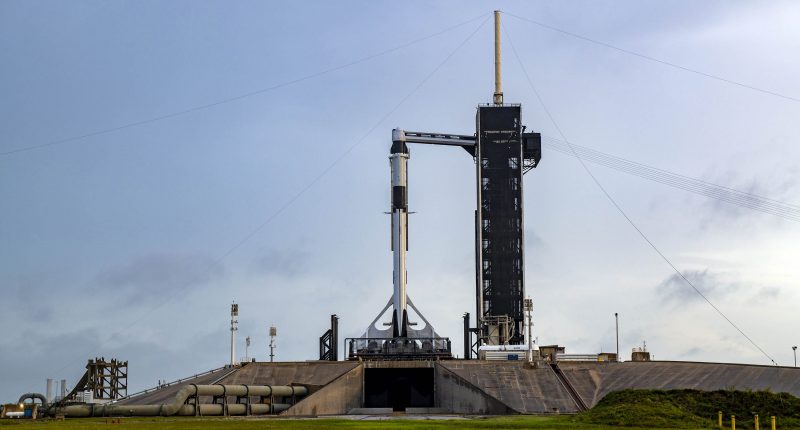Once again, the Dragon takes to the skies.
SpaceX is undoubtedly a leader in the space game, mainly focussing on our neighbor planet Mars and the conquest of space. On Thursday, Elon Musk’s space company sent its latest cargo mission (its 22nd Commercial Resupply Services (CRS) mission) for NASA to the International Space Station (ISS), marking SpaceX’s 17th launch of the year and the fifth capsule SpaceX sent to the ISS in the last 12 months.
CRS-22 has SpaceX’s Cargo Dragon spacecraft carrying more than 7,300 pounds of research, supplies, and hardware (including new space arrays) to the ISS.
The first-stage booster was a brand new Falcon 9 rocket, which took off at 1:29 pm EDT from Pad 39A at the Kennedy Space Center in Florida, and the first stage separated and was recovered by the drone ship “Of Course I Still Love You” eight minutes after launch. The second stage, which separated 4 minutes after the first stage left, was recovered on time as well. The Cargo Dragon is set to arrive at the space station at around 5 AM on June 5, where it will dock on a port of the Harmony module of the ISS.
As for Dragon, it contains two different animal experiments, including the first to be performed inside Dragon as it flies to the ISS. Called UMAMI, it investigates the symbiotic relationships between animals (in this case, baby squid) and microbes. It is also carrying oral bacteria to test germ growth with Colgate toothpaste, 5,000 tardigrades dubbed as ‘water bears’, 28 glow-in-the-dark baby squids, Butterfly IQ Ultrasound, and new solar panels, as well as fresh food, including apples, navel oranges, lemons, and avocados. Investigations will also be conducted to study the effects of microgravity on the formation of kidney stones — something that is all too common among crew members during spaceflight.
The Cargo Dragon spacecraft is expected to return to Earth in July.
That is not all that the Cargo Dragon is carrying. It also contains the first two of six new solar arrays called iROSA, built by Boeing and space infrastructure conglomerate Redwire Space, which are expected to improve the power generation of the ISS by 20-30%. Once installed, the six iROSA arrays will collectively produce over 120KW of power.
SpaceX is on a roll and is set to easily break its record of 26 launches in a year. To date, it has reused Falcon 9 boosters for 61 missions.
“After the launch of this mission, we have a busy June,” Joel Montalbano, ISS program manager for NASA said on June 2. “We have two EVA’s planned for June 16 and June 20 to support the deployment of the new solar arrays.”
The Tech Portal is published by Blue Box Media Private Limited. Our investors have no influence over our reporting. Read our full Ownership and Funding Disclosure →





